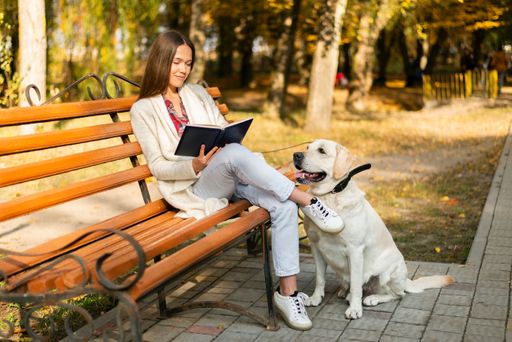Between their know-it-all attitude, sudden bouts of amnesia when it comes to being asked to do something, and a longing to be as far away from family as possible, teenagers can be hard to handle. But, even if you’ve never been a parent to a human teenager, you may have experienced similar traits in your adolescent dog.
If your dog has suddenly started ignoring commands and refuses to “come” or “sit”, it may be an age-related phase. A new study from a collection of UK universities has found that dogs do experience a rebellious phase, akin to moody adolescence in humans. As they navigate their fluctuating hormones, they can push for some extra independence and become just as obstinate as their human teenage counterparts.
Awkward adolescence in dogs
In this latest research, the behaviors of 70 dogs were observed as they were trained to become guide dogs - once at five months old, then again when they reached 8 months. There were a variety of breeds, including Labrador retrievers, Golden retrievers, German shepherds and a mixture of these breeds. The older dogs were reportedly twice as likely to blatantly ignore sit commands given by their caregivers, leading researchers to conclude that, despite knowing the command, they were stubborning opting not to. What is even more interesting is that the same dogs did obey the command when given by a stranger.
Contributor to the research, zoologist Dr. Naomi Harvey, said, “We have been able to show for the first time that dogs display increased conflict behavior, characterized by a reduction in obedience, during puberty.
“Importantly, this reduced obedience is seen only in how the dog behaves towards their caregiver.” Data was also collected from 285 guide dog owners who reported similar results and also found that both younger and older dogs were more open to being trained than teenage dogs.
Harvey explained to the BBC, “The hormonal fluctuations and the remodeling of the brain to become an adult brain cause a lot of issues.” Sadly, when misunderstood, the resulting behaviors of such big changes can lead to repercussions for the teenage dog. Owners who don’t understand that their difficult pets may be going through a normal phase can be left despairing over what has changed. Teenage dogs fall into the most likely age group to be handed in to shelters.
Puberty in dogs begins earlier than most would think, starting at as early as five months old and potentially lasting until they are 18 months old or more. Other signs of doggy adolescence are heightened curiosity and interest in their surroundings, increased levels of energy and destructive behaviors, such as demanding barking or chewing the furniture.
Dan Morris from the pet website PetNPat has a 6 month old Labrador/German Shepherd cross puppy, and is just starting to experience these things. His dog Bingo, seen here eating chicken, was extremely easy to control - until recently!
Bingo is going through these changes and “just decides he’s not going to do it” when asked to do something he would usually have done.
We all remember those teenage years - a time to seek further independence, explore your boundaries and act out a little - and it’s not so different for dogs.
Living with a teenage dog
Acceptance
This research will hopefully make the concept of awkward adolescence in dogs more commonly understood. Simply being aware that a dog’s behavior is part of a normal, natural phase can help owners a great deal. Understanding that your dog’s sudden change in temperament or behavior doesn’t necessarily signal a life-long regression can help to create an acceptance that will bring about more tolerance and patience as they grow out of it.
Training
Another important factor is early and consistent training, to minimize the disruption. Ideally, training should begin around the time a pup reaches eight weeks old, when they enter their most impressionable phase. If a dog owner commits to diligently and consistently training and adequately socializing their dog whilst it is still a pup, it should make the awkward teenage years easier to handle. When things become difficult, there is a foundation of basic training to work back towards and previously instilled good behavior that can be reinforced.
Keep them stimulated
One effective way to traverse this tricky phase with as little fall out as possible is to keep your dog busy. Increasing the amount of mental stimulation and physical exercise they get can help to minimize their desire to behave destructively. Puzzle toys stuffed with treats can also be used to keep them feeling stimulated.
Give them a comfy retreat
Whilst keeping them stimulated and well exercised is vital, it is also important to provide them with a comfy place of their own to retreat to. Much like teenagers like to lock themselves away in their rooms, adolescent dogs can also need some down time, too. There are even some beds designed specifically as calming beds for dogs, helping them to feel less anxious and soothed by such a warm, safe and secure feeling bed.
Most importantly, try to remember that your dog hasn’t completely forgotten all that they have previously learned, they are just struggling to focus as they deal with some hormonal changes. Maintaining consistent training, keeping them well stimulated and giving them some patience and time is key.



















